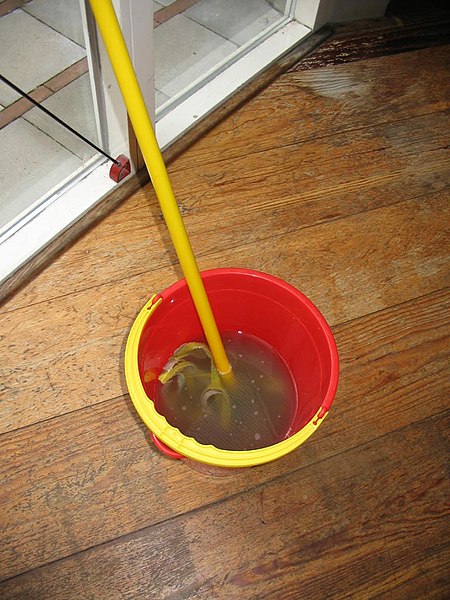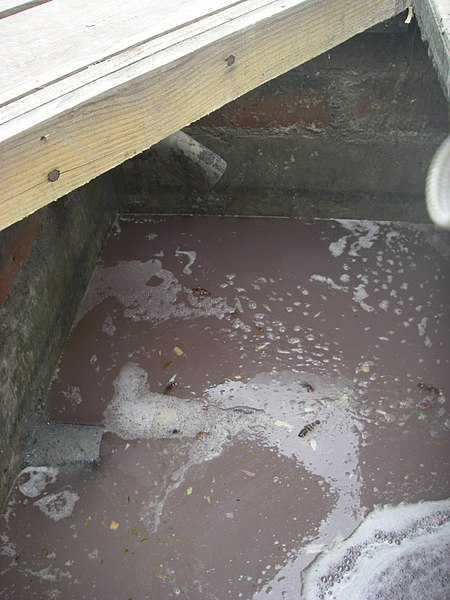Greywater refers to domestic wastewater generated in households or office buildings from streams without fecal contamination, i.e., all streams except for the wastewater from toilets. Sources of greywater include sinks, showers, baths, washing machines or dishwashers. As greywater contains fewer pathogens than blackwater, it is generally safer to handle and easier to treat and reuse onsite for toilet flushing, landscape or crop irrigation, and other non-potable uses. Greywater may still have some pathogen content from laundering soiled clothing or cleaning the anal area in the shower or bath.
Left: greywater sample from an office building. Right: Same greywater after treatment in membrane bioreactor
Example of a source of greywater in the household: dirty water from cleaning the floor
Urban decentralized greywater treatment with constructed wetland in Oslo
Greywater treatment plant with membrane bioreactor in the basement of an office building in Frankfurt
Sewage is a type of wastewater that is produced by a community of people. It is typically transported through a sewer system. Sewage consists of wastewater discharged from residences and from commercial, institutional and public facilities that exist in the locality. Sub-types of sewage are greywater and blackwater. Sewage also contains soaps and detergents. Food waste may be present from dishwashing, and food quantities may be increased where garbage disposal units are used. In regions where toilet paper is used rather than bidets, that paper is also added to the sewage. Sewage contains macro-pollutants and micro-pollutants, and may also incorporate some municipal solid waste and pollutants from industrial wastewater.
Pumping station lifting sewage to the treatment plant in Bujumbura, Burundi
Greywater (a component of sewage) in a settling tank
Screening of the sewage with bar screens at a sewage treatment plant to remove larger objects in Norton, Zimbabwe
Screening of sewage at a sewage treatment plant in Bujumbura, Burundi








